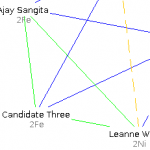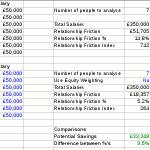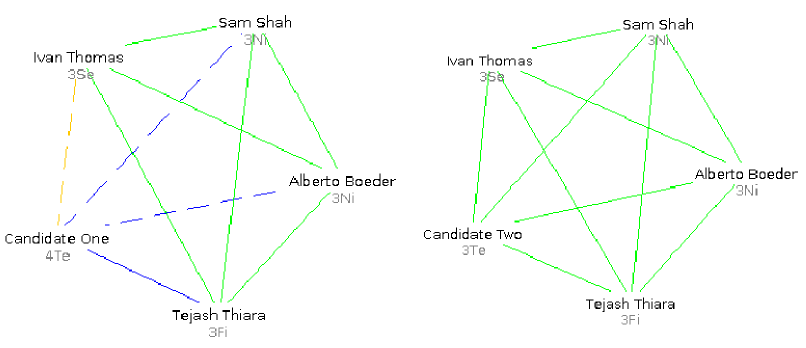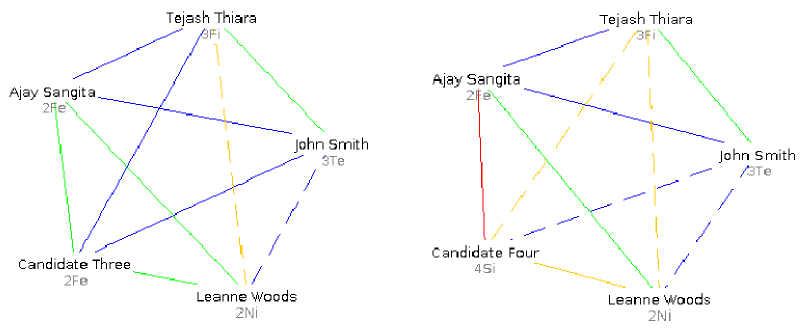Successfully predicting the impact that a new hire has on managers and existing team members is easier said than done. While it's possible to test candidates for skills, aptitude and personality, none of these approaches guarantees good relationships or good fit between team members and newly appointed employees.
 By predicting team fit and relationships, 4G makes it possible to hire for optimal relationships between new hires and existing employees. This then allows you to focus on raising performance and building experience, rather than suffering a drop in performance as a result of trying to 'retro-fit' new hires into existing teams.
By predicting team fit and relationships, 4G makes it possible to hire for optimal relationships between new hires and existing employees. This then allows you to focus on raising performance and building experience, rather than suffering a drop in performance as a result of trying to 'retro-fit' new hires into existing teams.Hire for Optimal Relationships
How it Works
Criteria for the new role are defined and current team members are profiled with 4G to establish existing Social Relationships. Short listed candidates also undertake the 4G assessment to establish their own level of fit with current team members.
 Having gathered the data, Social Relationships are predicted in order to illustrate the level of fit between candidates and existing team members. Relationship Friction is also assessed. The data from 4G is then combined with other information from the selection process, contributing towards a final recruitment decision.
Having gathered the data, Social Relationships are predicted in order to illustrate the level of fit between candidates and existing team members. Relationship Friction is also assessed. The data from 4G is then combined with other information from the selection process, contributing towards a final recruitment decision.Hire for Optimal Relationships
In Practice
As shown in diagram 1 below, by comparing the level of fit between Candidate One on the left and Candidate Two on the right, it's clear that given the 4 green lines, Candidate Two offers the best fit and relationships, both for themselves and for the 4 other team members.
Diagram 2 offers another example of using 4G in recruitment. In this case, the data from 4G makes Candidate Three a better fit than Candidate Four.
It should be noted that while the 4G data is shown visually, it is also possible to quantify this information and analyse it numerically via Relationship Friction. Relationship Friction offers a precise quantification of the different Social Relationships, aiding decision making when the diagrams aren't sufficient.
It should be noted that while the 4G data is shown visually, it is also possible to quantify this information and analyse it numerically via Relationship Friction. Relationship Friction offers a precise quantification of the different Social Relationships, aiding decision making when the diagrams aren't sufficient.
Hire for Optimal Relationships
Return on Investment
The ROI is immediate and can be sustained over the long term. In addition, the process can be applied across the whole business, making the ROI easily repeatable and scalable.






